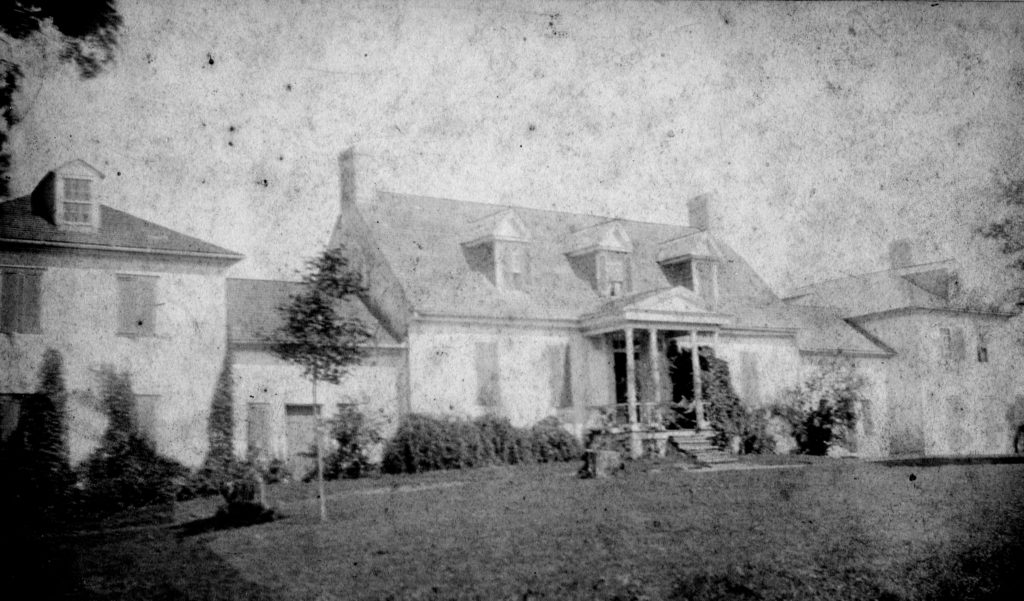
The Howard County Conservancy was chosen by Howard County Recreation and Parks as the nonprofit partner to provide environmental education programs at their Belmont Manor and Historic Park. Howard County Conservancy expanded it’s environmental education programs to Belmont in April 2014. Conservancy programs and offices are located in the Carriage House on the park’s grounds utilizing the Belmont parkland and the surrounding 16,000 acre Patapsco Valley State Park.
A History of Belmont Manor
Dr. Mordecai Moore was a prominent Maryland citizen. In the spring of 1689 he looked out over a gently sloping valley that followed the curve of the Patapsco River. He was attracted by the tranquility and said to himself, “this is my own choice.” The tract was surveyed, and in 1695 Moore took out a patent for the land and called it “Moore’s Morning Choice.” Despite his poetic feelings about the property, Moore never built on it.
A note about enslaved people at Belmont: while records are limited, there is evidence that enslaved people lived at Belmont in the early to mid 1800s. Available information is included in this timeline.
1695- Mordecai Moore patented 1368 acres as “Moore’s Morning Choice”
1732– Caleb Dorsey, Sr. buys the property and gives it to his son Caleb in 1735 as a wedding present.
1735- Caleb Dorsey Jr. married Priscilla Hill. Caleb and his brother built several iron forges on tributaries of the Patapsco River. Caleb and Priscilla reared three sons and six daughters at Belmont.
1772- Caleb Dorsey dies and leaves Belmont to his son Edward Dorsey.
1799- Edward Dorsey dies and the property is divided between his five children. The complexity of Edward’s will could not be settled for 15 years.
According to tax records, Edward Dorsey’s heirs hold 36 slaves from his estate including 21 enslaved people between the ages of 12 and 50.
1803- Edward’s daughter Priscilla Dorsey, meets Alexander Contee Hanson, who later became Chancellor of Maryland. Priscilla and Alexander eloped to Annapolis where they were married at the ages of 16 and 19.
1814- Priscilla inherited Belmont along with her husband Alexander Contee Hanson.
1849- Priscilla dies and wills the property to her son, Charles G. Hanson. The family lives at Belmont with sisters Annie and Florence until 1917.
1860 – An 1860 Federal Slave Census shows Charles Hanson owns 10 enslaved people. Records that follow reveal the names and ages of 11 enslaved people:
- Elizabeth Hall, 45, female
- Louisa Hall, 25, female
- Rebecca Hall, 21, female
- Alcinda Hall, 18, female
- Charlotte Hall, 16, female
- Howard Hall, 11, male
- Frank Hall, 7, male
- Achsah Hall, 3, female
- Mollie Barnes, 62, female
- Harry Hall, 4, male
- Eliza Hall, 2, female
1917-Annie Hanson sells Belmont to Mary Graham Bowdin Bruce and her husband Howard. Mary is a descendent of Caleb and Priscilla Dorsey.
Howard Bruce owned steeplechase horse Billy Barton who came in second at the Grand National Steeplechase in England. He was buried in full tack near the barn at Belmont.
1947- Mary Graham Bruce and Howard Bruce give 13 acres to daughter Julia Morris Bruce Dobbin and husband, Tilton H. Dobbin. Property becomes known as Dobbin House
1960- Mary Graham Bruce and Howard Bruce leave the property to a cousin, David Bruce.
Post 1964:
In 1964, David Bruce gifted the Belmont Manor property to the Smithsonian Institute. Belmont Manor changed hands several times until 2012 when the land was obtained by the current owners, the Howard County Recreation and Parks.
